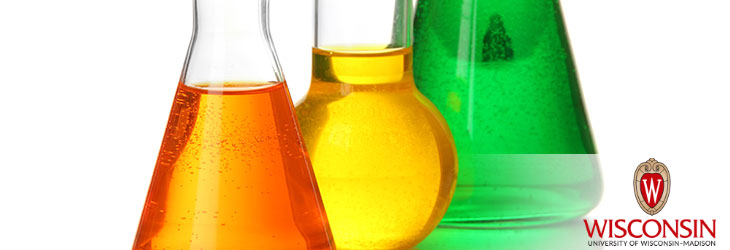Materials & Chemicals

Directed Assembly of Triblock Copolymers
WARF: P06113US
Inventors: Paul Nealey, Juan DePablo, Frank Bates
The Wisconsin Alumni Research Foundation (WARF) is seeking commercial partners interested in developing a method for the complex three-dimensional fabrication of nanoscale structures based on a two-dimensional chemical substrate.
Overview
The current art of nanoscale manufacturing uses self-assembling diblock copolymers to replicate a chemical pattern upwards. This method may be used to replicate a chemical pattern over a large area. However, if a more complex copolymer film could be created, such as one that uses triblock copolymers or higher order copolymers, nanoscale manufacturing capabilities could be significantly enhanced.
The Invention
UW-Madison researchers have developed a method for the complex three-dimensional fabrication of nanoscale structures based on a two-dimensional chemical substrate. A triblock or greater order copolymer is deposited on a chemically patterned substrate that is symmetrical in two dimensions. The substrate has several different chemically active regions. As long as the number of distinct regions is one fewer than the order of the copolymer, the surface pattern can be directed to assemble into a three-dimensional structure by annealing the block copolymer above its glass transition temperature. This process provides conditions that energetically favor the desired three-dimensional morphology.
Applications
- Fabrication of nanoelectronic devices, separation membranes, fuel cells, catalysts and other materials with interesting mechanical, electrical or optical properties
Key Benefits
- Reduces the cost of nanoscale manufacturing by easily transforming simple patterns into complex architectures
- Allows multiple device layers or materials to be patterned in one lithographic exposure
- Allows creation of more complex structures than diblock copolymer self assembly
- Retains perfect or near-perfect replication over a large area
- Templating processes can transfer the structure of polymer films into patterns of metals, semiconductors and dielectrics
- Triblock copolymers can store substantially more information than diblock copolymers